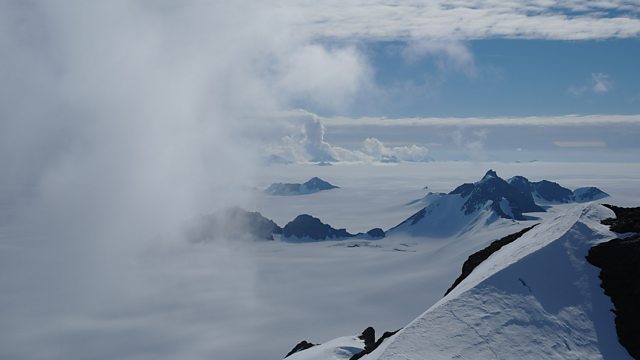Antarctic Ice Melt and Sea Level Rise
Antarctic ice melt and sea level rise. Also earthquake prediction and undersea fibre optic data cables act as seismometers
Antarctic ice melt and sea level rise – The rate of sea level rise from melting ice sheets and ice shelves in Antarctica has trebled in the past 5 years, due to global warming. Satellite data is showing that ice loss from Antarctica has increased global sea levels by 7.6mm since 1992 and could reach 15 cm the end of the century.
Earthquake Prediction
Global earthquake models pass stress test. Combining GPS and seismic data gives us the best earthquake forecasts yet.
Undersea fibre optic data cables that carry the world’s telecommunications data can also be used to detect seismic signals from earthquakes. This is particularly useful for picking up signals from remote undersea tectonically active regions which are not very well covered by land-based seismic recorders.
Picture: Summer clouds swirl in around the Staccato Peaks of Alexander Island, Antarctic Peninsula. High snowfall and strong weather gradients in this mountainous area make assessment of glacier mass balance particularly challenging. Credit: Hamish Pritchard, BAS
Presenter: Roland Pease
Producer: Fiona Roberts
Last on
More episodes
Broadcasts
- Thu 14 Jun 2018 19:32GMTΒι¶ΉΤΌΕΔ World Service except News Internet
- Fri 15 Jun 2018 04:32GMTΒι¶ΉΤΌΕΔ World Service except Australasia, East and Southern Africa, News Internet & West and Central Africa
- Fri 15 Jun 2018 06:32GMTΒι¶ΉΤΌΕΔ World Service Australasia & East and Southern Africa only
- Fri 15 Jun 2018 10:32GMTΒι¶ΉΤΌΕΔ World Service West and Central Africa
- Fri 15 Jun 2018 14:32GMTΒι¶ΉΤΌΕΔ World Service Australasia
- Sun 17 Jun 2018 01:32GMTΒι¶ΉΤΌΕΔ World Service West and Central Africa
- Mon 18 Jun 2018 00:32GMTΒι¶ΉΤΌΕΔ World Service except News Internet & West and Central Africa
Podcast
-
![]()
Science In Action
The Βι¶ΉΤΌΕΔ brings you all the week's science news.


